OnePlus 7 Pro Review
- Paul Thurrott
- Jun 27, 2019
-
20

OnePlus has done it again: The OnePlus 7 Pro is one of the best smartphones in the market and an unparalleled value. There’s just one problem. And whether it’s a major or minor problem depends on your needs, and what you care about most in a smartphone.
Before getting started, it’s important to position the OnePlus 7 Pro correctly.
Windows Intelligence In Your Inbox
Sign up for our new free newsletter to get three time-saving tips each Friday — and get free copies of Paul Thurrott's Windows 11 and Windows 10 Field Guides (normally $9.99) as a special welcome gift!
"*" indicates required fields
Like its predecessors, the OnePlus 7 Pro is a flagship smartphone and meant to compete head-to-head with the best the industry has to offer; for me, this means the Samsung Galaxy S10 family, the iPhone XS family, and, if you’re a Google fan, the Pixel 3 family. And, like its predecessors, the OnePlus 7 Pro significantly undercuts the prices of those flagship competitors while delivering even better and more high-end specifications than they do. That’s where the “value” part of the OnePlus discussion always comes into play.
But with the 7 Pro, OnePlus is also making taking the firm’s “Never Settle” mantra to new heights. The OnePlus 7 Pro is, in its maker’s own words, an “ultra-premium smartphone,” one that doesn’t just exceed the quality of the competition but instead seeks to render it moot. I’ll explain where the OnePlus 7 Pro does and does not meet this lofty ambition in this review.
But for the OnePlus fan, or at least the OnePlus curious, this shift in positioning means that the OnePlus 7 Pro is also significantly more expensive than were previous OnePlus flagships. And with prices heading north of $700 for some models—previous OnePlus flagships landed at $500 to $550—the buying decision gets a bit more complicated. Especially when you consider that Samsung lowers prices on its flagships over time and Google’s Pixels are often on sale. Too, Google recently released lower-cost Pixel 3a and 3a XL that further muddle the notion of what constitutes a great value in smartphones.
With all that in mind, let’s dive in.
Design
The OnePlus 7 Pro is gorgeous and modern-looking smartphone with a stunning all-glass design. My review unit is particularly attractive thanks to being is infused with a mystical-looking Nebula Blue color on which many have commented and asked for a closer look. It shimmers and shines as you turn it in the light like the finish on a high-end performance car. (The OnePlus 7 Pro is also available in Mirror Gray and a limited-edition Almond.)
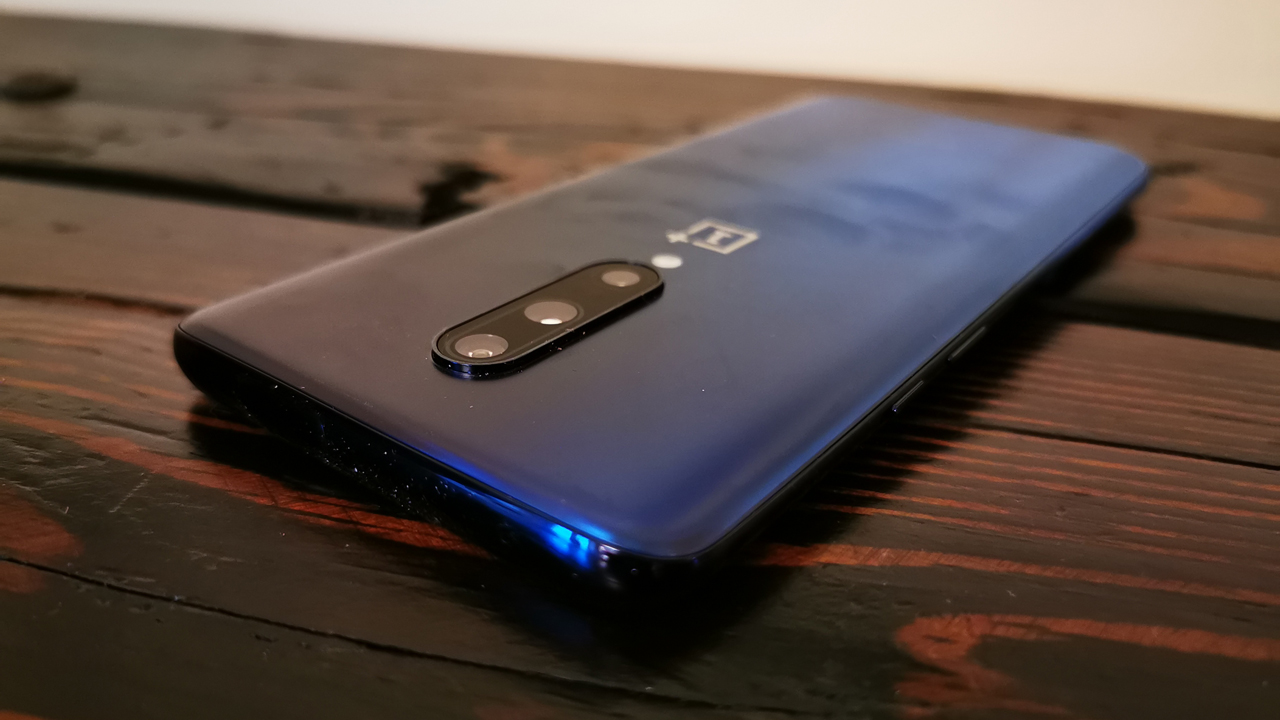
On the downside, the glass design is fragile—and a smudge magnet—and will certainly crack if the phone is dropped despite being coated entirely in Gorilla Glass 5 protection. Worse, the use of glass is functionally superfluous as the OnePlus 7 Pro doesn’t provide wireless charging capabilities.

You’ll want a cover to protect your investment, and credit to OnePlus for providing one, as always. The included cover is a clear rubbery design that lets you appreciate the handset’s general design and color while keeping it safe from falls. Unfortunately, in doing so, you also lose the feel of the OnePlus 7 Pro’s gracefully curved edges in your hands. It’s one of those devices you find yourself touching repeatedly and turning around in your hands.
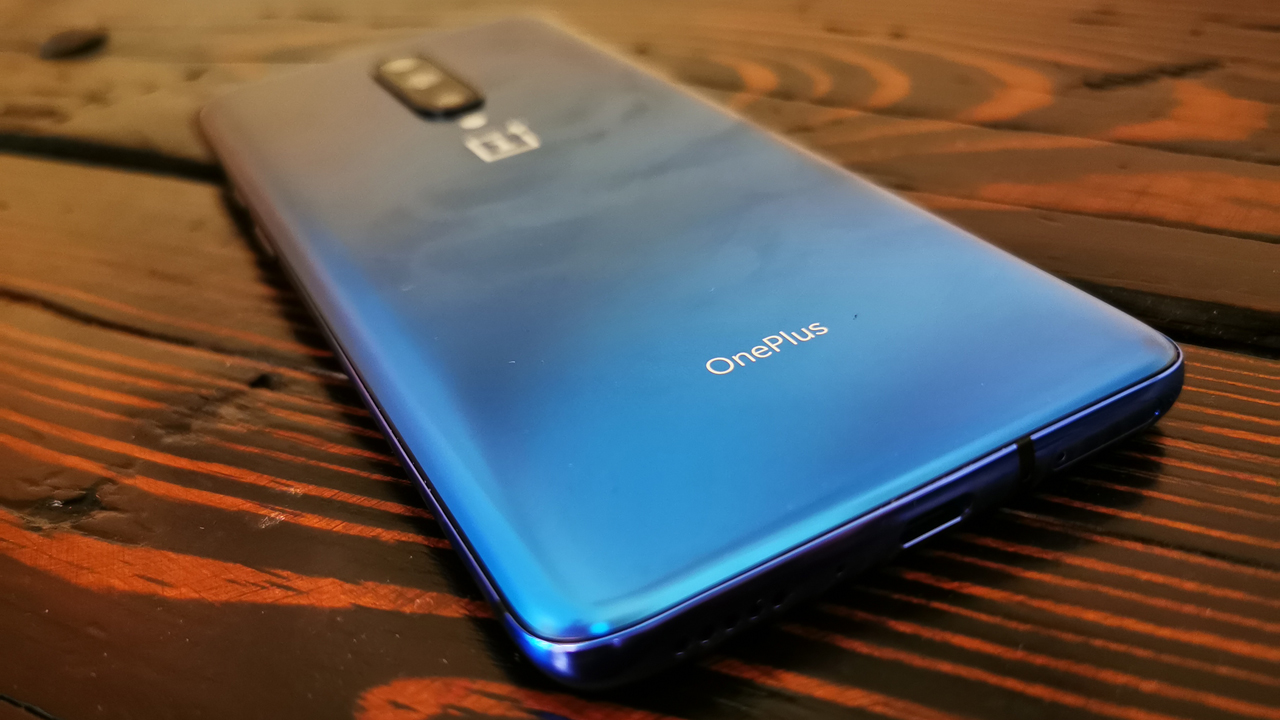
At about a half-inch taller than my Apple iPhone XR, the OnePlus 7 Pro is also a bit large and may not be appealing to those who prefer smaller, more pocketable device. I don’t mind the size, and I think it complements the display—described below—nicely. It’s one of the few phones I’ve used that has made me consider using for reading rather than an iPad.
Display
The OnePlus 7 Pro provides what I believe to be the first true all-screen design and it that display is a wonder. OnePlus describes the handset’s huge (6.67-inch) and tall (19.5:9 aspect ratio) QHD (3120 x 1440; 516 ppi) display as being “Fluid AMOLED” thanks to its 90 Hz refresh rate, which is half again as fast as most smartphone displays and somewhat akin to what hardcore gamers expect from an expensive gaming display for PCs.
I have never seen anything like it. This Fluid AMOLED display has ruined me forever and it makes all other smartphone displays seem old-fashioned and slow by comparison.
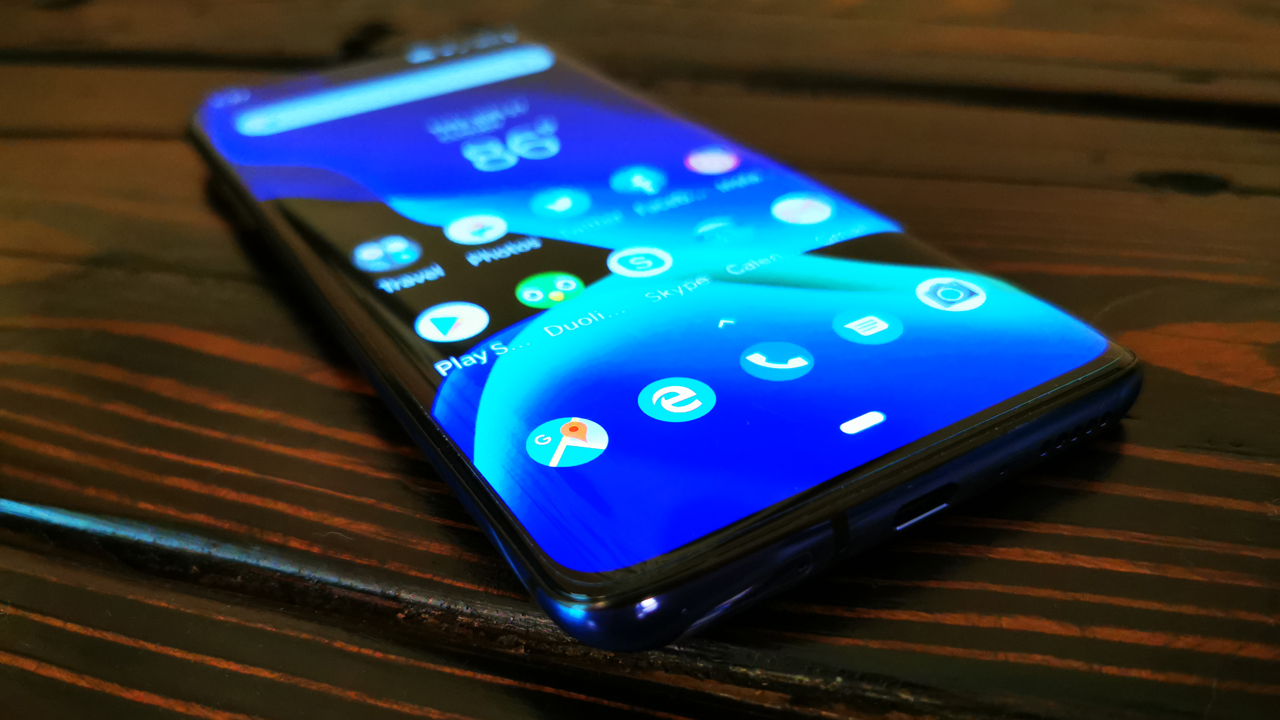
It’s not just the speed, though swiping, gestures, and animations all erupt across the display as if shot from a cannon. It’s also the sheer smoothness of it all, and the incredible brightness that adapts on the fly to any lighting condition, from the darkest indoor room to the brightest outdoor environment. This is a display that can emit 583 nits of brightness (as when outdoors) when required but can also ratchet the brightness down to just .27 nits for usage in dark environments that won’t sear your retinas.
The OnePlus 7 Pro display is also curved on the right and left sides so that it blends naturally into the curved body. This curvature is similar to, but subtler than, that of the recent Samsung Galaxy flagships, and I find it to be attractive and non-obtrusive. It also extends almost literally the edges of the device in every direction; only the bottom of the device betrays a very small and thin bezel of any meaningful kind.
OnePlus was able to achieve this design, in part, by hiding the front-facing selfie camera inside a periscope-like riser that emerges from the top of the handset when required. And the clean effect of that top, bezel-less edge is both attractive and functional, since the Android status bar isn’t cut in half or limited by a giant notch. Too, there is no in-display camera to ruin the clean lines.
The Fluid AMOLED display also supports HDR+ for saturated and rich colors, and deep, deep blacks, in supported apps. Amazon Prime Video, Netflix, and YouTube are all officially certified for HDR playback on this handset, and I can attest to the display quality of supported content. On more than one occasion, I’ve lost time while “testing” a movie on the OnePlus 7 Pro. Between the edge-to-edge nature of the screen, the HDR compatibility, and the stereo speakers, the experience is just so immersive.
Are there any downsides to this stunning display? Sadly, yes. I suspect that the size and brightness contribute to what I’ve found to be just average battery life. And there’s no always-on display as we see on the Google Pixels. Instead, you can tap the display or raise it off the table to see an ambient display of time, date, battery life, and notifications. Neither of these is a deal-breaker, but they need to be pointed out.
Put simply, the display the OnePlus 7 Pro’s best feature, and it’s going to help the firm sell a lot of devices.
Hardware and specs
OnePlus claims that the OnePlus 7 Pro “fully loaded,” and the reality, for once, backs up the marketing. And while the notion of a gaming PC-class smartphone is still a bit fuzzy today—I expect that to change as mobile gaming takes hold even with the most fervent of gamers—the OnePlus 7 Pro is indeed a gaming-class smartphone. By which I mean, from the perspective of its component specifications, it stands alone at the top of the smartphone market.
What does that mean? It means that the OnePlus 7 Pro ships with an octa-core 2.84 GHz Qualcomm Snapdragon 855 processor with Adreno 640 graphics, a stunning 6 GB to 12 GB of RAM depending on the model, and 128 GB or 256 GB of ultra-fast, dual-lane UFS 3.0 storage. There is simply nothing else on the market with this configuration, and certainly not in the $670 to $750 price range. Hell, a basic 64 GB iPhone XS costs $1000. And let’s not forget that the display, as noted, is otherworldly and another (literally) huge differentiator.
In practical terms, that means that there’s nothing—no game, nothing—that you can throw at the OnePlus 7 Pro that it cannot handle without breaking a sweat. It scores 3489/10830 in single-core/multi-core performance in Geekbench 4, compared to 3266/9653 for the Huawei P30 Pro and just 2333/8196 for the Snapdragon 845-based Google Pixel 3 XL. This is the fastest smartphone I’ve ever used.
That UFS 3.0 storage may not be getting enough credit for the handset’s overall performance: As OnePlus noted during the device’s press conference announcement, UFS 3 offers roughly twice the throughput of the UFS 2.1-based storage used by the Samsung Galaxy S10 series and other flagships. This, combined with the 90 Hz display, the OnePlus 7 Pro’s other ungodly specifications, and OnePlus’ vaunted software optimizations combine to offer what I believe to be a unique, gaming PC-like level of overall performance. That this system is backed by liquid cooling is, perhaps, the least surprising news. I’ve never noticed any heat issues, ever.
Beyond the core specifications, the components in the OnePlus 7 Pro read like a power user’s wish list, with a few niggling missing items.
The communications components are as modern as any customer should expect: The OnePlus 7 Pro provides near-universal LTE/4G support over both GSM and CDMA, dual-band Wi-Fi 802.11 a/b/g/n/ac, Bluetooth 5.0 with A2DP, LE, and aptX HD, and NFC.
And OnePlus’ quick charging system, now called Warp Charge 30, is faster (by 38 percent) and as cool as ever, though it now requires a bigger power adapter: It can charge the OnePlus 7 pro’s large 4000 mAh battery to 50 percent in just 20 minutes. Real world battery life was average, but I think Warp Charge 30 alleviates any concerns there.
As noted above, the OnePlus 7 Pro ships with dual stereo speakers, and it features built-in Dolby Atmos support. The speakers are loud and crisp and work well for spoken word content like podcasts and audiobooks, music, and videos. I especially appreciate the immersive nature of movies and other videos.
There are a few missing features. The OnePlus 7 Pro lacks a headphone jack, wireless charging capabilities (despite its glass body), and it is not (officially) waterproof. OnePlus—wink, wink—says that it just doesn’t want to pay for the waterproof certification and is passing the savings along to customers. But that doesn’t inspire confidence, and while I’m sure the phone would survive a quick dunk in a sink or toilet, I wouldn’t test either scenario. Nor would I want to quibble with OnePlus support if something went wrong.
Cameras
If you were waiting for that moment where the OnePlus 7 Pro hype stumbled, and the device finally disappoints, this is it. Everything else I’ve complained about is relatively minor, and I feel that most the issues I’ve raised can be forgiven, and easily. But the problems with this device’s camera system, sadly, cannot be overlooked.
The rear camera system consists of three lenses, a 48 megapixel Sony IMX586 normal lens with an f/1.6 aperture and both optical and electronic image stabilization, an 8 MP telephoto lens with an f/2.4 aperture with 3x optical zoom and OIS, and a 16 MP ultra-wide angle lens with an f/2.2 aperture and a 117-degree field of view.
It sounds great on paper. But in use, it’s a mixed bag. And that’s true despite a steady stream of camera software updates aimed at explaining how on earth the OnePlus 7 Pro received such a high score from the photography experts at DxOMark. (DxOMark allegedly used newer camera software than what was shipped to customers originally, but we now have access to the same software version.)

And by a mixed bag, I mean that there are some surprisingly good aspects to this camera system that are sadly ruined, in my estimation, by some sadly bad aspects.
Let’s start with the bad.
Overall, pictures taken with the OnePlus 7 Pro are washed out and lacking the deep colors and contrasts that most smartphone users expect here in 2019. You can see this clearly in my Instagram feed, where I’ve been alternating between the OnePlus 7 Pro, which has been my daily driver for several weeks now, and the Huawei P30 Pro, which has the single-best smartphone camera system I’ve ever used.

The OnePlus 7 Pro’s rear camera system includes two other lenses, a telephoto lens for getting closer to the action and an ultra-wide angle lens for taking in more of a scene. At a basic level, both work as advertised, and I like the on-screen method for quickly switching between each mode in the camera app. But in use, both of these lenses also produce lackluster results.

The ultra-wide angle lens is the less painful, those shots are simply washed out and dull like those of the main camera. But the telephoto lens is a huge disappointment. It ostensibly offers 3x optical zoom capabilities, but the quality of its shots are never better than what’s possible with digital zoom; they’re blurry and have that weird watercolor-like patchy look that has always dogged digital zoom on smartphone cameras. As I noted in my Huawei P30 Pro review, that device’s 5x optical zoom capabilities are vastly superior.
To work around these limitations, I’ve experimented with the camera quite a bit. And what I’ve found is that I can sometimes achieve the type of colorful/contrasty shot I prefer by focusing on a source of light in a shot and then manually adjusting the brightness level via an on-screen control that appears next to the focal point. The problem is that this is a fiddly and manual process that must be repeated each time I take a shot. With the superior cameras in the Google Pixels and Huaweis, I just focus and shoot, and the shot is routinely superior if not near-perfect.
It’s not all bad news. The quality of the OnePlus 7 Pro’s low-light shots is routinely excellent, in sharp contrast with more typical photography. In fact, it’s often superior to that of the Google Pixel 3 XL and 3a XL, and I generally consider the camera in those devices to be the bar for this type of shot.

And portrait mode works well, and unlike iPhone, works with non-human subjects, too.

And for whatever reason, the food and drink shots I take with the OnePlus 7 Pro are generally quite good and rise, almost, to the quality I see with the Pixel 3/3a XL and P30 Pro.

I can’t explain why this is so, but through some combination of a portrait mode-style blurring of the background and better-than-usual color reproduction, these shots usually come out great.

Finally, the fun periscope-style front camera mechanism, where the camera rises up out of the top of the OnePlus 7 Pro when summoned, is fun and elicits a smile each time I use it. (It’s also a source of discussion for anyone who witnesses it coming out of the phone.) But the camera itself—a 16 MP Sony IMX471 with a fixed focus and an f/2.0 aperture, and no OIS—is nothing special, and it lacks the ultra-wide selfie mode, and the second lens, that makes the front camera system on the Google Pixel 3 XL such a joy to use. Overall, it’s adequate.

Put simply, if camera quality matters to you above all else, then you’ll have to skip out on the OnePlus 7 Pro. Or hope that a future software update fixes at least the dull/bland photo quality that mars most shots. This isn’t out of the question: I feel that these problems are software-related, and not the fault of the hardware. Put another way, the reason that companies like Huawei, Google, and Samsung can deliver such amazing photos via their flagships has more to do, I think, with their expertise and experience in AI and other photographic software advances. (Remember, the rear camera on the Pixels uses just a single lens.) OnePlus is a much smaller company and is most likely only just starting to understand this need and the techniques it will require.
Security
As with its predecessor, the OnePlus 7 Pro employs an in-display fingerprint reader instead of a rear-mounted reader as I’ve preferred.
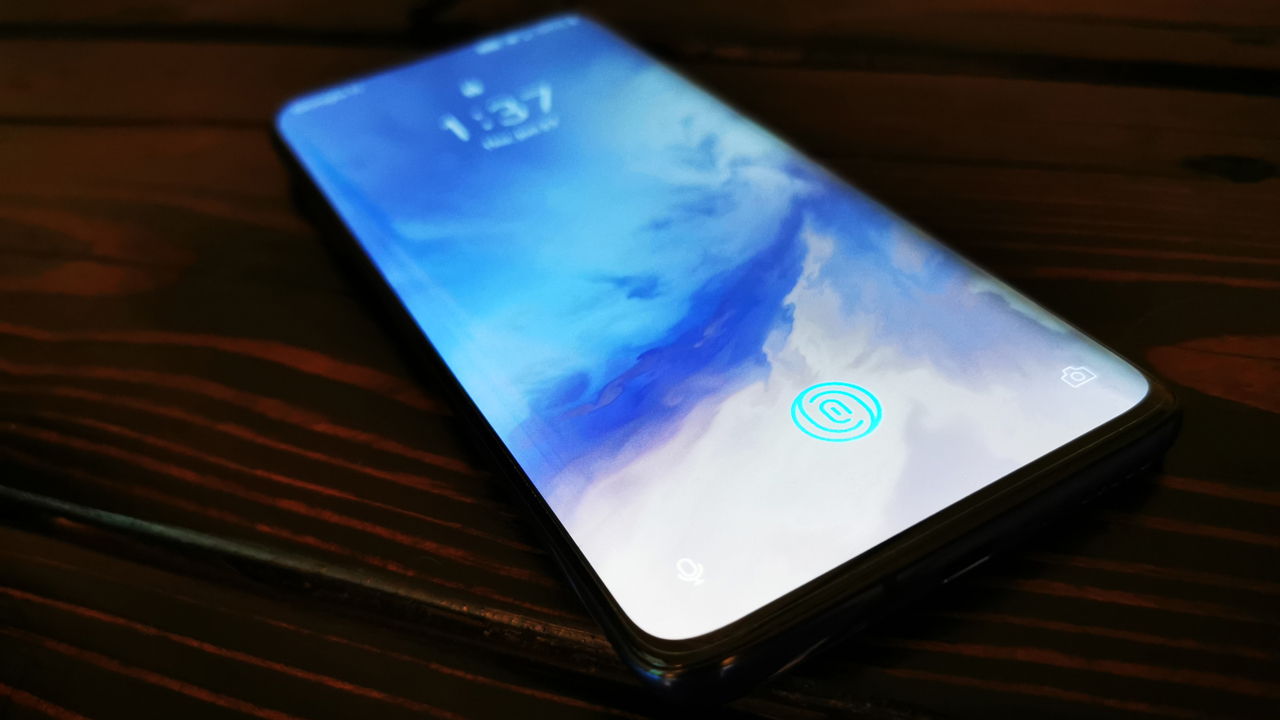
And I can’t believe I’m writing this, but that in-display fingerprint reader is one of the best features of the OnePlus 7 Pro. In general, I’ve been dubious of this authentication method, and my experience with previous versions, on OnePlus and Huawei handsets, has been less than reliable, especially over time. But that’s not the case with the OnePlus 7 Pro. The fingerprint reader has always been quick and reliable, and it’s made me a convert. OnePlus says that the improvements are due to a larger and faster sensor, but whatever the reason, it’s a real breakthrough.
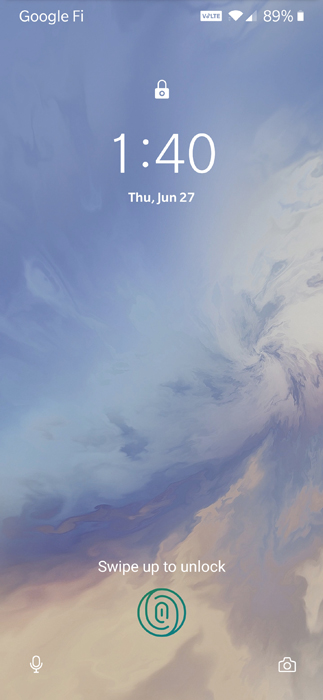
Beyond this, the 7 Pro also lets you enable a facial recognition feature called Face Unlock which is known to be less than secure. For this reason, I don’t enable Face Unlock and haven’t really tested it.
Software
OnePlus has a unique take on Android called OxygenOS. The latest version, which ships with the OnePlus 7 Pro, is called OxygenOS 9.5, and it’s based on Android 9 Pie, which is the currently shipping version of the platform. Like some other Android modifications, OxygenOS is a relatively thin skin over Google’s original, but OnePlus does a lot of work under the covers to optimize the system for performance and smoothness.
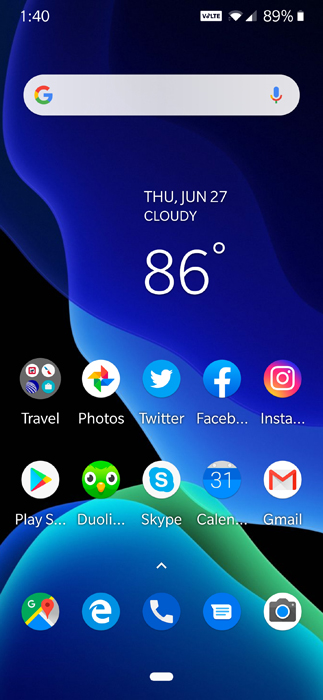
I like that, and that the system can be customized—via icon sets, fonts, and a boatload of other personalization options—to a degree that is simply not possible with the stock Android launcher. And while I wish it looked and worked more like stock Android by default, this customization satisfies my aesthetic needs. I no longer feel the need to experiment with third-party Android launchers, for the most part.

I have a few small issues. The OnePlus feed that’s found to the left of the first home screen is a pale imitation of Google’s Discovery feed and is essentially useless; I wish OnePlus provided a way for users to choose that instead. And some apps don’t respect me configuring the device to not support auto-rotate; I’m not sure if that’s an app or OS issue, but I don’t experience this elsewhere and it’s annoying.

Beyond that, the OnePlus 7 Pro is bursting with useful additions to Android and precious little in the way of crapware or app duplication, as we see on Huawei and Samsung handsets. A new built-in screen recorder feature lets you simultaneously record the video and audio playing on the phone, as well as externally-captured audio via a microphone or headset. Another new feature, called Zen Mode, goes far beyond the digital wellbeing features that Google builds into Android by making most phone features unavailable for 20 minutes (during which time you can only make and receive emergency calls and take photos). Ironically, Google’s Digital Wellbeing is not available on the device.
Like its predecessors, the OnePlus 7 Pro also includes the firm’s previous Android innovations, of course, including Reading mode, which can be configured per app and puts the display into an e-reader-like grayscale mode; and Gaming mode, which optimizes performance for the game offers various graphics and audio enhancements.
There are also some useful OnePlus-specific apps. Community connects you with OnePlus and its community of fans, and as I noted recently, its feedback and response system is second to none and a real selling point for this phone. And OnePlus Switch makes it easy to transfer all of your data—contacts, messages, photos, and more—from your previous phone to the OnePlus; I used it and found that it worked very well.
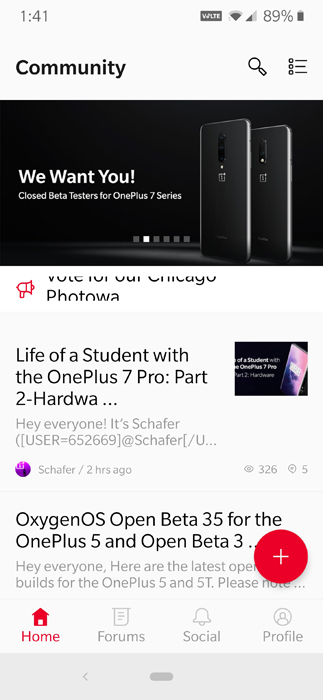
I happen to prefer Google’s stock Android experience to most third-party modifications. But given how OnePlus has optimized OxygenOS for its devices, has provided such tremendous customization capabilities, and ships useful utilities instead of crapware, there’s little to complain about here. If we could just get the Google feed going, and I understand that OnePlus is looking into that, this might turn into my favorite version of Android yet.
Pricing and availability
The OnePlus 7 Pro undercuts the prices of the flagships with which it competes by a healthy margin. But as noted earlier, this handset is also significantly more expensive than previous OnePlus smartphones.
Consider the OnePlus 5T, which was released in late 2017 at a starting price of $499. In my review, I noted that it offered “a modern design, a stunning 18:9 display, crazy-fast facial recognition, and more for about half the price of a typical smartphone flagship.”
In early 2018, OnePlus released the OnePlus 6 at a starting price of $529. I described it in my review as “an unparalleled value and a viable alternative to far more expensive flagship handsets.”
The OnePlus 6T followed in late 2018 and started at $550. It was, as I wrote, “a far better value than any iPhone, Google, or Samsung flagship” and its pricing, I noted, would “almost certainly put it over the top for many.”
The OnePlus 7 Pro starts at $669. That’s a significant price jump over its predecessor and the largest-ever model-over-model price jump in OnePlus’ history. But a comparable iPhone XS Max starts at $1100, while a Google Pixel 3 XL starts at $900. Samsung’s S10+ also starts at $900, but it can be had for as little as $700 if you purchase it (locked) from a wireless carrier, as most do here in the United States. And that complicates the value story, doesn’t it? The S10+ has a superior camera system, wireless charging, and waterproofing, and while the firm does provide a lot of crapware and duplicate apps (plus whatever nonsense that carriers add), many will view that as the safer choice.
Recommendations and conclusions
OnePlus has always painted itself into a corner with its “Never Settle” marketing slogan. And while the firm’s flagships are consistently excellent and a great value, they also each arrive with curious compromises. So it is again with the OnePlus 7 Pro, which is a study in contradictions:
It delivers the best-ever display found in a smartphone, but in a package that will be too big and too heavy for some users-.
It somehow manages to provide excellent low-light photos but washed out normal photos and abysmally bad 3x zoom shots.
It offers cool, high-end features like an in-display fingerprint reader that actually works and a deliriously fun pop-up selfie camera but lacks basic smartphone features like a waterproof rating, wireless charging, and a headphone jack.
And while it is absolutely a tremendous value for the price, it is also the most expensive OnePlus handset by far.
Add it all up, and the OnePlus 7 Pro is just as enigmatic and frustrating as its recent predecessors. And that means that you will really need to scan through my creatively renamed pros and cons lists below to see whether anything that’s crucial to you is in the wrong list.
Your mileage will vary according to need, but the biggest issue for me is the camera, which, again, underperforms overall, an ongoing problem with OnePlus handsets. And if photography really matters to you as well, the Galaxy S10+, iPhone XS/XS Max, and Pixel 3 XL—and maybe even the less powerful Pixel 3a XL, which starts at just $480—are better choices. (And if you’re in the market for iPhone, it’s not like any of these Android-based handsets are even in the offing anyway.)
If not, the OnePlus 7 Pro does offer some unique advantages over the competition, including its superior and notchless display and future-proof, gaming-class specifications. And now that the handset is available from some carriers in the U.S., you can at least roll the cost of the device into your monthly payments. I’m curious to see if this change helps OnePlus move the marketshare needle at all.
The OnePlus 7 Pro is a beast and is highly recommended, but only if you aren’t overly concerned with camera quality. If OnePlus could just make a few improvements to the camera, the OnePlus 7 Pro would be my favorite smartphone by far.
At-a-glance
Never Settle
- Best-ever smartphone display
- No notches or bezels thanks to the fun pop-up selfie camera
- Top-tier performance
- Surprisingly good low-light photography performance
- Great value for the price
- Reliable and fast in-display fingerprint reader
Settle
- Camera system is not best-in-class, 3x optical zoom is terrible
- No wireless charging
- Not (officially) waterproof
- No always-on display
- No headphone jack
- Can be a bit big and unwieldy